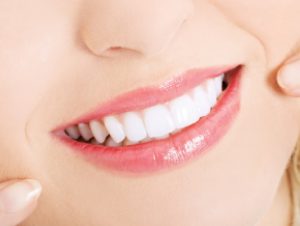However well we look after our teeth, accidents can happen to any of us. There are many ways in which an adult or child can suffer a broken tooth, from a sports injury to a trip or fall; cracking a tooth on a seed to excessive tooth grinding. The extent that a broken tooth is damaged can vary greatly tool. Small chips or pieces of the tooth breaking away are normally less serious than larger cracks, or teeth becoming loose in their socket following a traumatic injury.
The good news is that a dentist will usually be able to help in the event of a chipped or broken tooth. Depending on the size of the chip, or nature of the break they will normally be able to repair your tooth, or offer a solution that restores the aesthetic to how it looked previously.
Saving your broken tooth
In order to give your dentist the best possible chance to save or repair your broken tooth, place any whole or partial tooth fragments in a plastic container with milk or saliva entirely covering them. Get to a dentist as quickly as possible – your GP will usually be unable to assist in such a situation. The dentist may be able to glue the fragment back on, or even reattach a fully broken tooth into the socket.
For very small chips, they may be able to simply polish the surface so that the jagged edge can be smoothed over. This process is known as cosmetic contouring. Larger breaks and cracks will normally require more extensive treatment. Every case will be different, however, so you should seek advice from your dentist regarding your specific situation.
Rinse your mouth with warm salt water as soon as you can after suffering a broken tooth to help keep bacteria at bay. Spit out any blood, or press some sterile gauze against the area to stem the flow. Seek emergency medical help if the bleeding fails to stop, or the pain becomes severe.
If the broken tooth has left a sharp edge that could cut the inside of your cheek or your tongue, you can press some sugar-free chewing gum into the gap as a temporary measure while you seek treatment. Avoid biting or licking the affected area and stick to soft foods until the broken tooth can be reattached or repaired.
Broken tooth restorations and repairs
If you cannot find the fragment of a broken tooth, or it is too damaged to save, your dentist should be able to use special tooth-coloured material to rebuild the tooth, or make an individual crown, filling or cap to replace what cannot be saved.
Other options may include root canal work if the nerve has been exposed. Or extracting the remainder of your broken tooth and replacing the entire thing with a dental implant. This can result in a perfectly natural looking implant, with the colour matched exactly to the neighbouring teeth. Dental implants can last for many years if cared for correctly.
You may need multiple visits to the dentist for more extensive treatment like dental implants or bigger tooth restorations and repairs. Your dentist will explain the options to you, including all associated costs and ongoing treatment plans. They will also be able to advise you on how to care for any implants or restorations going forward. Often, a broken tooth, however skilfully repaired, will not be as strong as the remaining natural teeth in your mouth, so care will be needed to keep it looking and feeling at its best.
Helping a child cope with a broken tooth
Supporting a child who has suffered a broken tooth is extremely important. They will be in pain and will doubtless also be feeling scared, shocked and shaken by the incident that led to the break or crack. Keep the child calm while helping the stem the blood and find any tooth fragments to take to the dentist for repair. Give suitable painkillers to help with any discomfort and apply an ice pack to the outside of their face to help reduce swelling.
If the tooth was broken during a school day or sports session, keep the relevant adults informed about what is happening. You may also need to have your child’s medical history ready to provide to the dentist, including any allergies to medication and previous dental or oral concerns.





